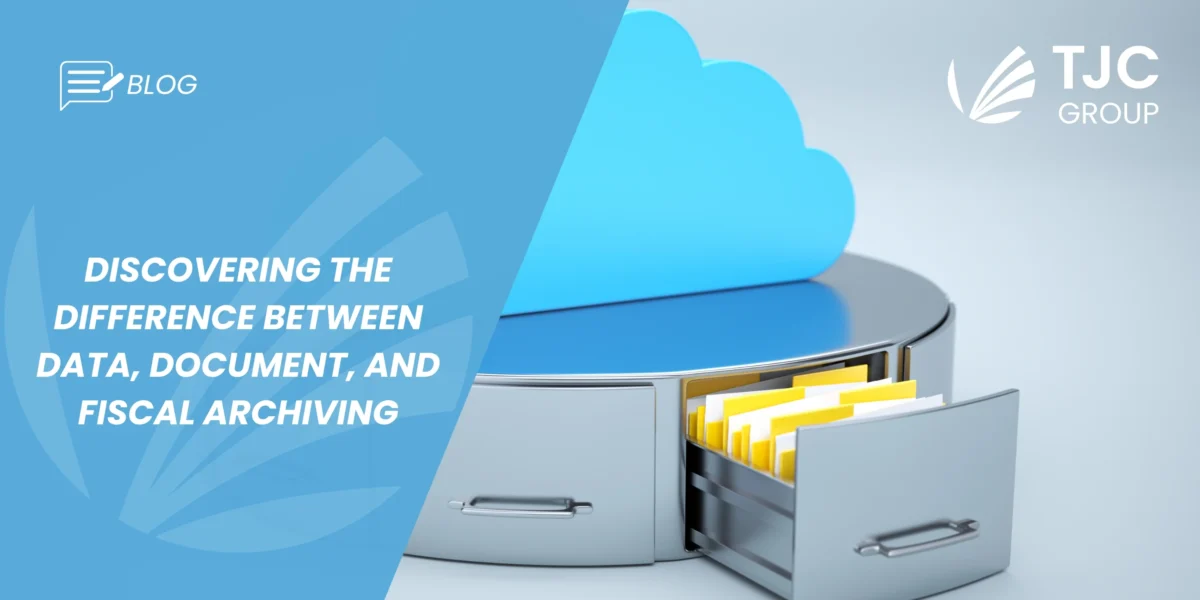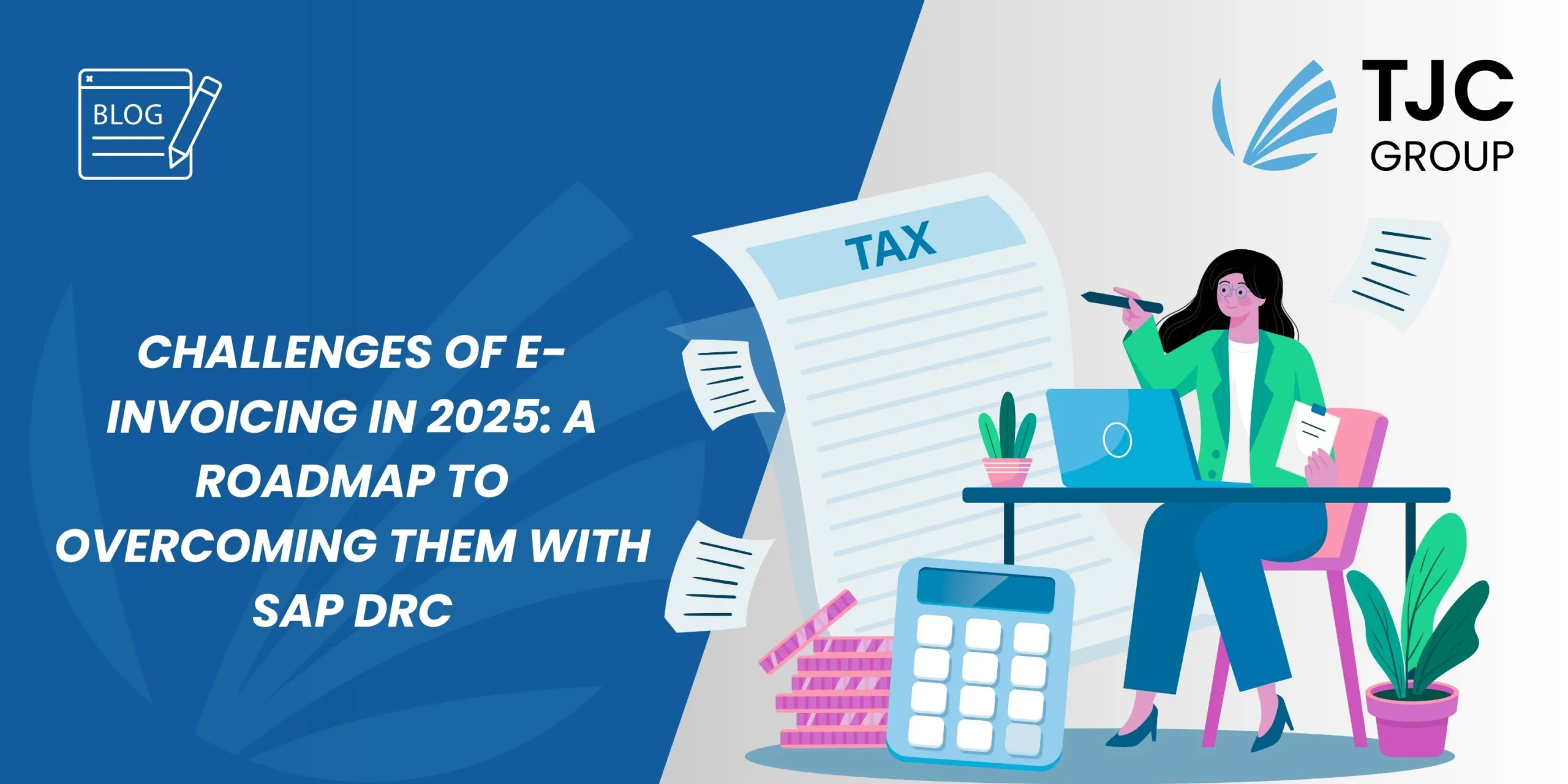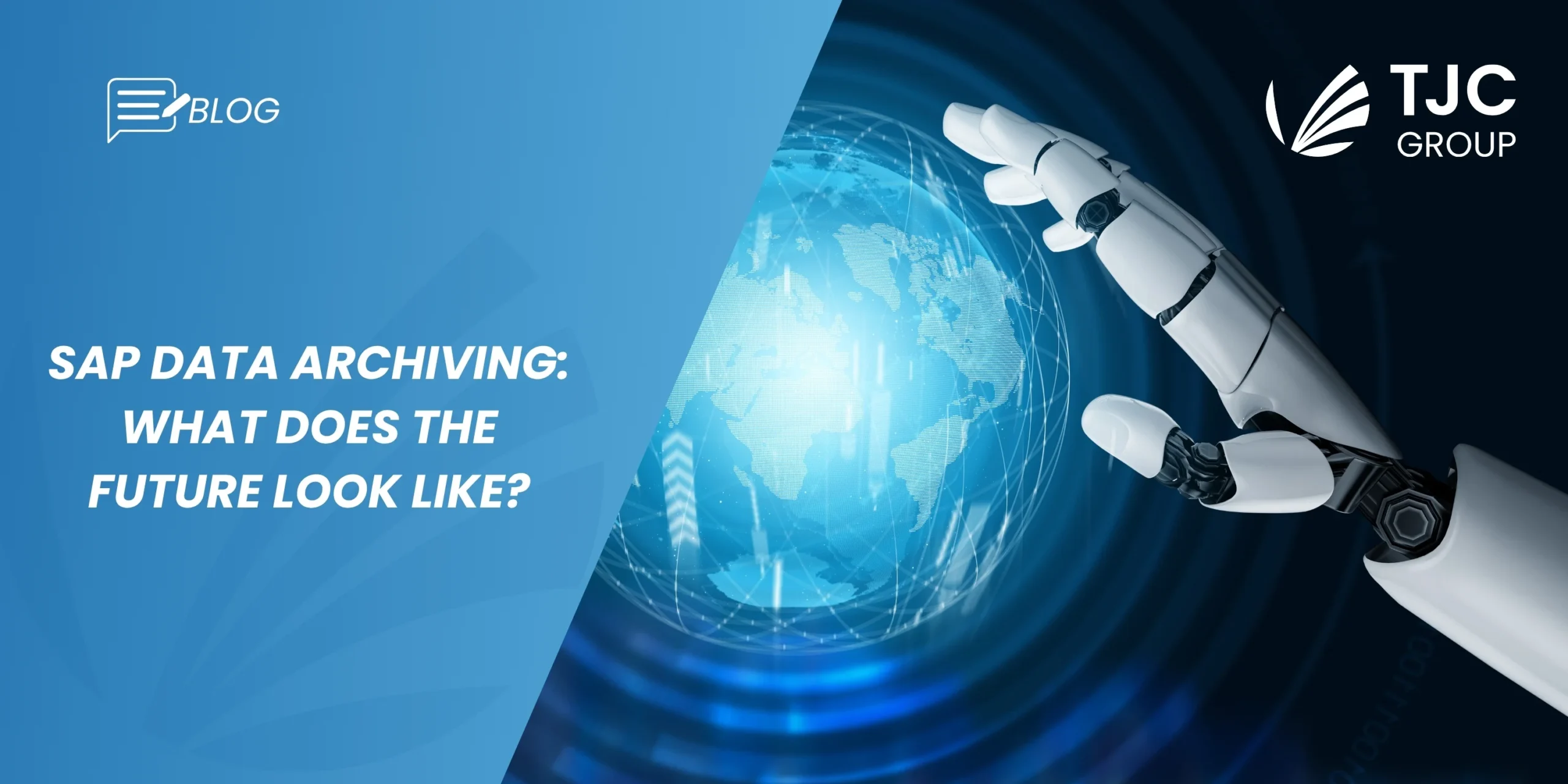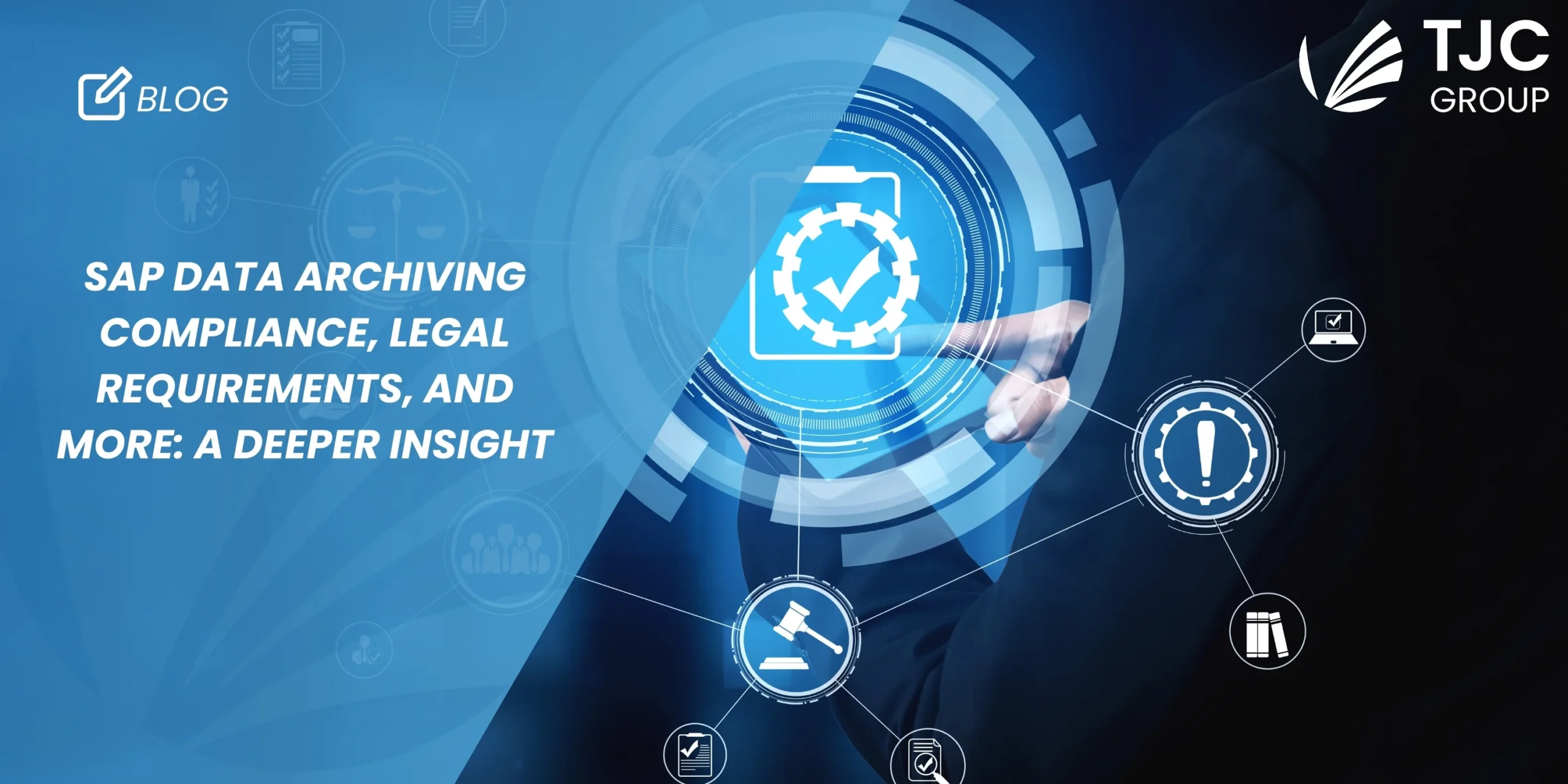Organisations truly understand the importance of archiving. However, it’s essential to know the different types of archiving available. In this blog, we will delve into the key distinctions between SAP data archiving, document archiving, and fiscal archiving, which outline their main characteristics and how each contributes to an effective data management strategy. Keep on reading for valuable insights.
Table of contents
Introduction
As organisations grow and scale, they generate vast amounts of data to run their day-to-day operations. However, over a period of time, this constantly growing data starts becoming a problem by putting more stress on your primary system, resulting in slowed performance and increasing maintenance costs. This is exactly where archiving comes into the picture. This effective process not only helps organisations ensure the efficient use of the database in the IT landscape but also allows for significant cost savings.
As a matter of fact, the process is not just a vertical analysis of your database but a comprehensive sweep of the entire system landscape, which allows you to understand which data is critical for audit and compliance purposes. With that said, you must consider various elements of the archiving process. In this article, let’s understand how SAP data archiving is different from document and fiscal archiving, and how these types help companies effectively categorise their data according to its characteristics. Continue reading to learn more about this topic.
Understanding different types of archiving
Often, many people are confused about data archiving and document archiving, thinking that both are the same thing. However, in reality, both are significantly different from each other. On top of that, another type of archiving is fiscal archiving. Let’s discover how these types are distinct from one another:
Data archiving
This type of archiving is perhaps one of the easiest to understand, but it is still a critical component of the SAP data archiving process. Data archiving is all about moving the data of your closed business transactions from the live system to near-line or offline storage. The most important things to consider in data archiving are to have a set process and strategy in place to reduce manual errors and ensure compliance with legal data retention requirements. Even though this process sounds easy, it can become complex without proper domain knowledge or expertise. That’s why seeking some help from an expert is highly advisable.
What are the advantages of data archiving?
Now that you have discovered what data archiving is, let’s understand what advantages it can provide to organisations:
Cost reduction: Archiving helps control data volume growth and reduce the cost related to storing vast amounts of unwanted data.
Data privacy: SAP data archiving allows you to ensure compliance with data privacy laws, tax, and audit-related requirements by retaining or deleting personal data in a required format.
Seamless migration to S/4HANA: By archiving the historical data from your main system, data archiving helps migrate with only relevant amounts of data to S/4HANA.
Less time for migration: This is quite simple to understand; the more data you have, the more time it’ll take for migration, which can be easily avoided with archiving.
Boosts system performance: With less data in your main system, it will positively impact and improve your system performance, backup times, and user experience.
Sustainability: With SAP data archiving, you can significantly reduce the use of excess energy, contributing to your organisation’s sustainability goals.
Document archiving
The easiest way to differentiate between document archiving and data archiving depends on the type of data that you are archiving. Document archiving is associated with unstructured data, such as sales invoices, Word documents, PDFs, etc. Interestingly, document archiving happens in real-time and can be stored on any content server. Just be mindful to keep the link active from the content server and to your SAP system so you can access these files.
Fiscal archiving
The last type of archiving is fiscal archiving. Simply put, fiscal archiving refers to the regular process of freezing your data. Freezing the data means you keep the state of your data at a specified time period by archiving it. This helps businesses ensure the quality of their audit report, which is based on consistent original data. Usually, the tax and audit teams prefer not to work on live data, particularly when generating audit reports.
Click the banner below to learn everything about SAP data archiving:
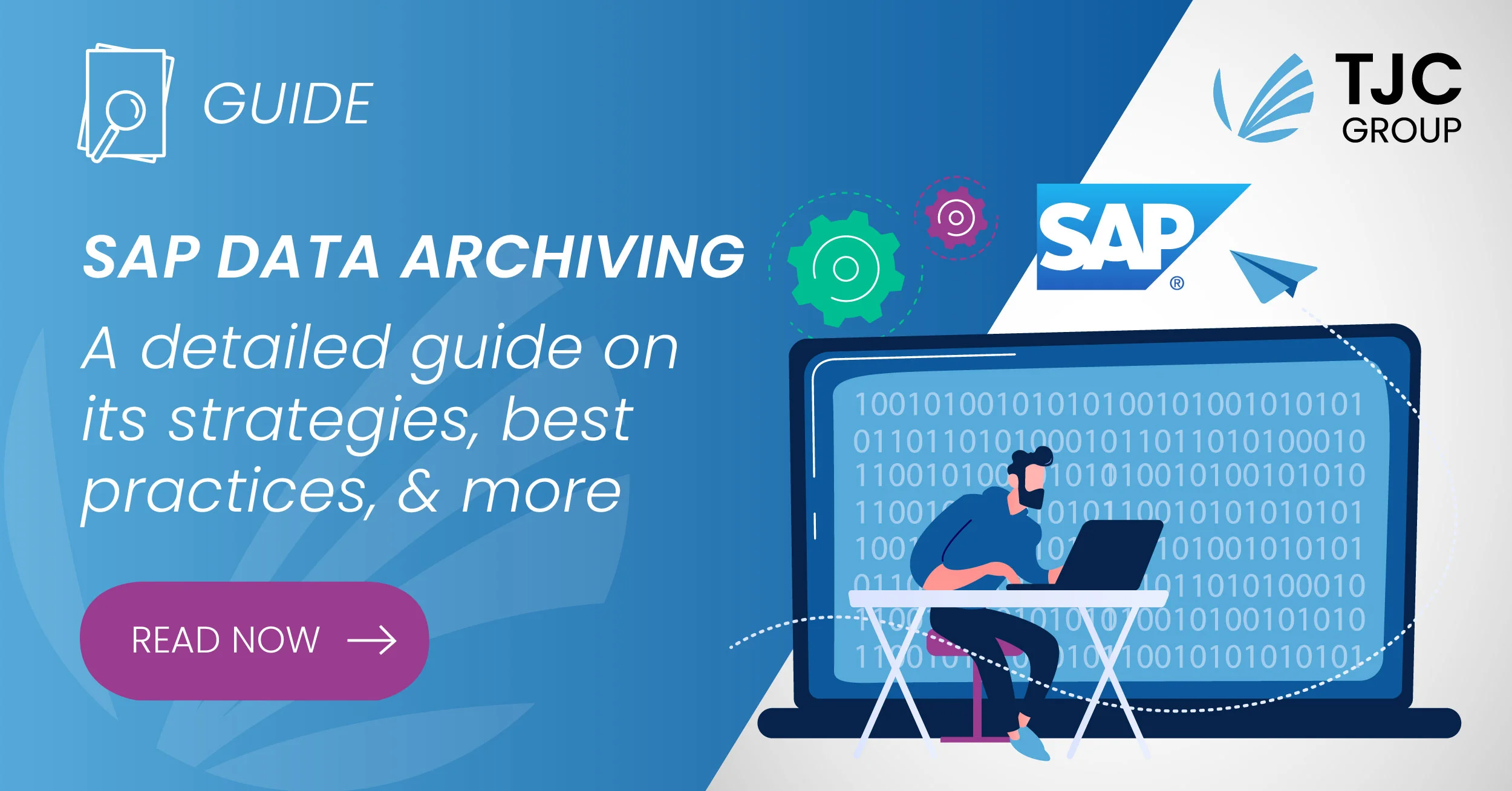
How can TJC Group help with data archiving?
Although data archiving is one of the most effective ways to move forward with your data management process, the entire process can be a little complex and time-consuming. However, with an expert by your side, the SAP data archiving process will become significantly smoother.

With over 25+ years of experience, TJC Group has helped various customers with their archiving projects. From evaluating your data volumes to archiving and managing them, our expertise will not only help you achieve desirable results but also overcome unwanted discrepancies and obstacles effectively. Furthermore, our knowledge of the legal and regulatory requirements, data privacy needs, business demands, and technical aspects can help you implement and execute a successful data archiving project.
FAQs
Q1. What is data archiving?
Answer:
SAP data archiving is a systematic and secure process that allows long-term data storage and retention. This process provides companies with a location to store critical data, which can be used for future audit-related requirements. What’s more interesting about data archiving is that once the data is archived, users can also access the data without affecting its integrity.
Q2. What advantages can organisations expect by archiving historical data?
Answer:
Here are some of the key benefits businesses can leverage with data archiving:
- Cost savings: Companies can control their data growth and reduce costs associated with storing large volumes of infrequently used data.
- Compliance: Archiving helps organisations ensure compliance with data privacy laws by retaining or deleting personal data.
- Seamless migration: You can make a successful move into the new system once your historical data is archived in a separate storage location with the help of SAP data archiving.
- Enhanced system performance: Once the inactive data is moved to another repository, you can free up valuable space in your database and reduce its burden of excess data, improving the overall system performance.
Q3. Are there any best practices to follow for SAP data archiving?
Answer:
The best practices to follow for an effective data archiving process are:
- Understanding the drivers: Evaluate the exact requirements or drivers for your data archiving project. These drivers can be anything from improvements in system performance to saving excess maintenance costs.
- Assessing data volumes: To assess your data volumes, start with a comprehensive analysis of database sizes, the usage patterns, and the overall rate at which they are growing.
- Defining procedures: For an effective SAP data archiving project, one must define procedures that take care of every aspect of the process.
- Compliance with retention policies: Different industries have different data retention regulations. That’s why adhering to compliance requirements and retention policies is crucial.
Q4. Why is data archiving essential for SAP systems?
Answer:
Here are some of the top reasons that make data archiving extensively critical for organisations:
- Allows you to reduce costs from operations to maintenance
- Improves your overall system performance
- Enables you to achieve your sustainability targets
- Reduces the total cost of SAP ownership
Q5. What technology is used in data archiving?
Answer:
While data archiving allows you to strike a balance between maintaining a lean IT infrastructure and retaining critical historical data, there are certain technologies that go into this process. In the SAP context, the Archive Development Kit along with Archive Administration (transaction SARA), is used for the SAP data archiving process. However, in the non-SAP context, technologies such as Intermediate Archive implementations can be used to support the archiving process.


